 The B-segment is India’s most competitive car segment. Every carmaker is seeking elbow room, trying to grab the largest slice of the pie. So, which is best? Harmaan R A J Madon attempts to find out
The B-segment is India’s most competitive car segment. Every carmaker is seeking elbow room, trying to grab the largest slice of the pie. So, which is best? Harmaan R A J Madon attempts to find out
Photography Sanjay Raikar
In many ways, hatchbacks are the most practical body type for India. Not only are hatches more affordable (with a few exceptions), they’re cheap to run and mostly cheap to maintain. Compact cars make the most sense on our crowded streets as well. But the sheer number of choices available means the consumer – you – is often stumped as to what the best choice is. I’ll attempt to help you choose the best car for your needs in this comparo through an exhaustive test drive. Even I don’t know who the winner is, yet.
There’s a common template to all the cars on test here. They’re all within four metres in length and they all have petrol engines equating to or less than 1200cc. This is because the Indian government, in all its wisdom, has decreed that small cars with small engines shall benefit from an excise reduction. Outright performance expectedly, isn’t what you should expect. Instead, the focus is on drivability and everyday usability while still delivering good fuel efficiency.
A good design is half the battle won for a manufacturer. An appealing shape does translate to footfalls into the showroom and eventually some sales. What is truly amazing about the eight cars I’ve tested here is the uniqueness in their design; all eight cars have a distinct visual identity.
MARUTI SWIFT
 Design & engineering
Design & engineering
While the Swift is now nearly five years old, it still has a shape which appeals to a lot people. The taut surfacing and peeled back lights, wide haunches and a blacked out A-pillar combine to give it a hot hatch appeal. The dark cabin does look and feel a little dated now, especially when you compare it some of the newer competition. This is the ‘all-new’ Swift, in that, it has a new petrol motor. It now shares the new K12M mill with its Ritz sibling. The rest of the car is pretty much unchanged from the Swift as we know it. Although the all-new Swift has been spied testing already, it’ll be another couple of years before Maruti launches it here. The Swift uses the hatchback standard of MacPherson front suspension and a torsion beam rear axle.
Space & comfort
The front seats are comfortable over long distances and the driving position is good too, although the Swift’s steering wheel only adjusts for rake. The driver’s seat is height adjustable only on the top end ZXi variant. Some of our team members found the pedal placement a little awkward in the Swift, especially in stop-start traffic.
The rear feels a tad cramped and is not helped by the high waist and sloping roof. The dark upholstery only adds to this feeling. The Swift has a large glovebox and large cubbyholes ahead of the gear lever, but at the rear, there isn’t much stowage. The boot is big enough for a couple of large pieces of soft luggage, but don’t expect it to take a full suitcase. The rear seat flips but does not split, which limits options if you need to carry three passengers for example, plus luggage.
The Swift can seat three passengers at the back, but it’s a squeeze – best for short runs. If you’re planning out of town trips, the Swift is cramped for five passengers. Rear seat headroom is 910mm but kneeroom at the back is only 680mm, after the driver’s seat was adjusted for CAR India tester Sarmad, who is 5 feet 8 inches tall. The ride quality is a little jittery though and the damping feels a bit too taut for our roads.
Performance & handling
The K12M engine has won many laurels for its refinement and fuel efficiency. It’s peppy, drivable and well-suited to the car. However, for many people who enjoyed the Swift with the older G13B engine from the Esteem, the new car doesn’t have quite the same urgency as before, nor does it sound raucous at the top end. It’s almost three seconds slower to 100km/h. The Swift possesses good levels of body control and grip, letdown somewhat by the JK Vectra tyres which squeal in protest around most corners. But for the most part, it is a very safe handling car while also providing some thrills around the twisties.
Fuel efficiency
The Swift is the most fuel efficient car in this test, returning 17.9kmpl overall. This is almost 2kmpl more than what the Swift with the G13B managed, which is sure to put a smile on buyers’ faces.
Safety
The Swift was rated at four stars by the Euro NCAP, which is a good rating for a hatchback. The top of the range ZXi variant gets ABS and airbags as standard while you can specify ABS on the midlevel VXi. There is no ABS on the base LXi however, although all versions have brake assist.
Value
Maruti has succeeded because it always offers good value propositions. Its cars are very reasonable to maintain too, and resale has always been strong. However, the firm has cut some corners in the Swift. There are no electrically adjustable rear view mirrors, for example, and although the ZXi now has an integrated audio system, it still does not have USB connectivity. Parking sensors aren’t available either. The Swift range starts at Rs 4.56 lakh for the base LXi, going up to Rs 5.79 for the fully-loaded Zxi.
SARMAD SAYS
The sheer number of Swifts one sees on the roads is proof enough of how well this oddball design has been accepted in India. Now with the more efficient K-series engine, the hatch has become an even more tempting proposition. It might not have the best in segment boot space or outlandish headroom, but these aspects usually aren’t the priority while buying a small car. I just wish it had better tyres. The widespread network of Maruti in India, its brilliant resale value along with the car’s decent reliability makes the Swift a solid contender for the top slot in this shootout.
MARUTI RITZ
 Design & engineering
Design & engineering
The Swift’s sibling, the Ritz is a newer design with a tall boy look which gives it a feeling of airiness in the cabin. The boomerang shaped tail lights and kink in the boot when viewed in profile might not be to everybody’s taste, but it does look distinctive. On the inside, the Ritz has a lighter grey tone to its cabin and the tacho in a separate pod is a cool touch. It shares a lot in common with the Swift, although its wheelbase at 2360mm is 30mm less than the latter. The Ritz too uses MacPherson struts up front and a torsion beam at the rear for suspension duties.
Space & comfort
The Ritz’s USP is its space and flexibility. The tall boy design gives the cabin an airy feel and the light grey plastic of the dashboard is brighter than the Swift’s. The Ritz has a split folding rear seat which adds to the stowage flexibility. The tall driving position gives a commanding view of the road. Most people who drive the Ritz like the forward located gear lever which frees up space between the front seats. The door pockets at the front are big enough for a 1-litre water bottle, but rear passengers have to make do with a single pocket behind the front passenger’s seat.
Getting in and out of the Ritz is a breeze and for older people or people who have back trouble, the car’s ease of ingress and egress is a boon. The ride is a bit jittery, similar to the Swift. Rear headroom is a massive 960mm, but kneeroom is somewhat cramped at 670mm – the least among this bunch.
Performance & handling
The Ritz is positioned as a sensible family car, and it drives like one. There aren’t any scary responses – it’s just that if you love driving, then the Ritz isn’t the car for you. The electric power steering isn’t as feelsome as an enthusiastic driver would like, there’s a lot of body roll and the JK Tyres’ sound effects ensure you never give it any stick. Driven sensibly, it is a breeze to use and in the end that appeals to a wider audience. Performance is brisk enough with the 0-100km/h time a shade slower than the Swift at 14.92 seconds. Roll-ons are on par for the course, but the Ritz is not what you’d call an enthusiastic performer.
Fuel efficiency
How efficient a car is more often than not decides its fate. Here, the Ritz posts a strong showing, usurped only by its older Swift sibling which now uses the same engine. With an overall figure of 17.4kmpl, the Ritz is one of India’s most fuel efficient cars.
Safety
The Ritz has airbags and ABS as standard on the ZXi variant, although ABS can be specified on the midlevel VXi version too. Since it is sold in Europe, it has to meet the stringent safety norms there, which it manages quite comfortably.
Value
There are instances of cost cutting in the Ritz. It is Rs 38,000 cheaper than the Swift and when you compare the features list, you see why. The Ritz ZXi does not have climate control for example, which is available in the Swift. It does not even have an anti-glare rear view mirror for night driving, which in our opinion, is cost cutting gone too far. Strangely, neither the Ritz nor the Swift have electrically adjustable rear view mirrors, although the smaller and cheaper Wagon R and Estilo do have it.
SARMAD SAYS
I have been using the Ritz for several months now as our long term car and to be honest, I have not found any major howler in the hatchback yet. Although, I would have liked to see a day-night driving rear view mirror in the Ritz which is surprisingly present in its sibling, the Swift. The accelerator and brake paddle position is the other minor issue with it. Overall, the car has proved to be extremely reliable and has a peppy engine. Unfortunately, the tyre quality still haunts Maruti hatchbacks. Probably, one couldn’t have asked for more for city driving.
FIAT GRANDE PUNTO
 Design & engineering
Design & engineering
The Grande Punto is a stylish looking hatch; one that garnered the most votes when we did a spot poll among our team and some friends. The prominent grille and neat body lines follow a minimalist design theme without too much design detail, but it enjoys typical Italian flair. The stylish chrome ringed dials in the instrument panel are classy, but the rest of the cabin doesn’t feel special. The plastics and fit and finish leave something to be desired, especially in 2010. If VW can offer European quality at Indian prices, pray why can’t FIAT?
Space & comfort
The Punto isn’t particularly spacious; its rear kneeroom at 670mm is the same as the Ritz. Rear headroom is the worst as well, at just 890mm. So, if you are the type who likes to be chauffer driven, then this is not the car for you. The back seat is quite reclined too.
The Punto’s driving position is a little strange and seat comfort is average. At the rear, it is especially cramped and the tight rear quarters will see you scuffing the door pads when you step in and out. The boot is spacious though and you can carry more than your weekly shopping quite comfortably.
Performance & handling
The Punto has a communicative steering. It is one of the nicest small cars to steer. But the rest of the package does not test the dynamics at all. The engine is an old-school SOHC unit with two valves per cylinder. This is an archaic engine and its wheezy nature just does not complement the character of the car. The 68PS of power and 98Nm of torque is further hampered by the weight of the Punto, which at a portly 1140kg, makes this the heaviest of the bunch. As expected, performance is dull, but Fiat has tried to compensate by gearing the Punto short. In the 40-100km/h slog in fourth, the car posted an impressive time of 26.63 seconds. While it steers and rides well, we wish it had a lot more poke. This Italian is like boiled pasta; the sauce and sizzle is missing.
Fuel efficiency
With an overall figure of 10.8kmpl, the Punto was the least fuel efficient car on test and by some margin. Again, the old technology powerplant and high kerb weight are the causes for such a poor showing at the pumps. The low economy figure will definitely put off a lot of buyers.
Safety
The Grande Punto feels solid and it is. It has scored very highly in frontal offset impact tests and is one of the best for pedestrian safety as well. The Dynamic and Emotion variants launched recently also feature ABS and airbags.
Value
The Grande Punto isn’t the cheapest car sold in India, but it isn’t the most expensive either. FIAT is desperate to play the value car game and so has now launched the Dynamic, Emotion and Emotion Pack variants of the Grande Punto. The top of the line Emotion Pack gets a Bluetooth stereo which also links to your mobile phone and allows for voice commands to operate the system which is all very cool. They’ve priced it competitively too with the range starting at Rs 4.87 lakh (on-road, Pune for the 1.2 Active), going up to Rs 5.51 lakh for the Emotion Pack. FIAT is also playing the service card and with service intervals of 15,000 kilometres, the company is trying to entice buyers. But at the end of the day, the car is underpowered and not very fuel efficient. There is just so much that sexy styling and packaging can make up for.
SANJAY SAYS
I preferred to drive the Punto because it is gorgeous looking and is designed appropriately. When I drove the car, I felt it was completely rooted to the ground. I felt confident enough to take the twists and the bends, though the seating position is a little clumsy. The car’s suspension is noteworthy as it took the bad roads in its stride without a lot of fuss. I would say that the Punto’s interiors do not match the other European cars in this segment. The engine felt adequately powerful even though my colleagues always discuss that it is underpowered. Overall, this FIAT is a decent little car to drive in the city and on highways.
HYUNDAI I20
 Design & engineering
Design & engineering
The big Korean hatch garners tons of attention. The swoopy profile, straked bonnet, bulging wheel arches and the front bumper together construe to give the i20 a look which will stay fresh for a few years to come. On the move, it looks even better. Inside, the i20 has brown dashboard plastics, which is something new for Indian buyers used to beige, grey or black all these years. Under the bonnet lurks the 1.2 Kappa powerplant. While it doesn’t have quite the same smoothness as Maruti’s K12 powerplant, it still is one of the best engines to come out of Namyang. The i20 boasts of a semi-independent rear suspension while at the front, the standard MacPherson struts are used.
Space & comfort
This is where the i20 shines. It is a spacious car and feels like it can accommodate five people with ease. It has class leading head and legroom, although the rear seat backrest is reclined more than the other cars. The i20 has large door pockets and a commodious glovebox and you begin to appreciate this stowage volume. The boot is big as well and the car can comfortably swallow luggage for four during a weekend away.
Performance & handling
The Kappa engine feels a tad underpowered for the i20. It is geared slightly shorter to compensate for this. While third gear roll-ons are good, fourth and fifth feel pretty tall. On the highway, you need to work the ’box to overtake, although city driving is easy. The light clutch and steering wheel make city navigation a breeze.
The i20’s suspension errs towards the comfort end of the ride/handling balance and this is not a car that likes to be driven enthusiastically. It rolls quite a lot through bends and there is marked understeer. The same light steering which is a boon in city driving lacks the feedback one might enjoy on ghat roads.
The i20’s ride over rippled city roads is very good, however, and it soaks up ridges and sharp edged bumps well.
Fuel efficiency
The i20 manages to run 12 kilometres for every litre of unleaded fuel and this is short of the others in this segment, with the exception of the Punto. The city figure of 10.5kmpl is a little disappointing, but the highway figure at 16.5kmpl is substantially better. This is more a function of the gearing with the fourth and fifth gears being quite tall.
Safety
The i20 is the only car here to receive a full five stars from the Euro NCAP. ABS, EBD and two airbags are available across the range while the top of the line Asta Option variant has six airbags. There are seatbelt warning lamps for four passengers in the i20.
Value
Hyundais have always been about value, but the i20 is a car which isn’t cheap. It ranges from Rs 5.61 lakh to Rs 6.95 lakh, which takes it to the upper end of this segment, but it does offer tons of kit at this price. You get steering mounted audio controls, USB connectivity for the stereo, climate control, electric mirrors with one-touch folding and a leather wrapped steering wheel. The fully loaded Asta Option even has a sunroof. When you consider all the kit on offer, the i20 doesn’t seem such a bad deal after all.
ADHISH SAYS
The Hyundai i20 impresses with its styling, soft suspension and great drivability for city use. The transmission is another positive aspect of the i20. However, the lifeless steering and the brown interiors go on to score negative points for this Korean.
SKODA FABIA
 Design & engineering
Design & engineering
The Fabia is the car which kick started the premium hatchback segment in India. It is truly a big hatch and when it was launched in 2008, it did command quite a premium. But with the competition heating up, especially with the recent launch of the Polo, Skoda have revised the prices of the Fabia. Still, it’s a quality hatch – big, spacious and solidly engineered. It too uses MacPherson struts and a twist beam rear axle, but the way the suspension has been engineered is truly impressive. The three-cylinder high torque petrol motor may feel thrummy, but its advantage over four-pot motors is its ability to lug comfortably from a low rpm.
Space & comfort
The Fabia is huge on the inside, so much so that you really do get the clichéd big car feel. The seats are supportive and comfortable over a long drive and there is plenty of stowage throughout the cabin. It matches the i20 for rear legroom and headroom is almost as much as the tall boy Ritz. This space efficiency has been achieved by a combination of clever packaging and design, even though it doesn’t have the longest wheelbase. Five average sized adults will be quite comfortable in the Fabia, even on a long drive.
Performance & handling
The Fabia has been geared towards drivability rather than outright performance. So while it is the slowest car to 100km/h in a sprint (slower than the Punto), through the gears, it more than makes up for it. This is because of the torquey nature of the engine which produces maximum twist of 108Nm at a mere 3000rpm. In the 60-120km/h slog in the fifth gear, the Fabia is by far the quickest. In fact, it is 8 seconds quicker than its Polo sibling, with which it shares much of its mechanicals. The handling of the Fabia is very competent too and it steers very well with high levels of grip and feedback. The gearshift quality might not be the best, but really that is the only fly in the ointment. The tractable nature of the engine makes it a useful tool on uphill twisties. While it may not win an outright drag race, in the real world, other cars will have to work hard to keep up.
Fuel efficiency
Surprise surprise! The Fabia returns a commendable overall figure of 16kmpl, which is less only than the Maruti twins. The torquey nature of the engine and tall gearing are responsible for this. While the Polo matches it on highway runs, the Fabia is more efficient in the city cycle.
Safety
When you step into a Fabia and pull the door shut, the solid thump with which it closes tells you all you need to know. The Fabia feels like a mini tank, which is a good thing on our roads. It also has airbags as standard across the range while ABS is offered on the higher end models.
Value
This is where the Fabia takes a beating. It is the most expensive car on test here with prices ranging from Rs 5.66 to Rs 7.44 lakh. That’s a lot of money for a small car, and this is after Skoda has revised prices downward.
ADHISH SAYS
The Skoda Fabia is a wonderfully put together car – brilliant build quality, amazing interiors, great comfort and space, amazing efficiency and most importantly, it is a nice car to drive. However, the downside of the Fabia comes in the form of Skoda’s after sales service.
CHEVROLET BEAT
 Design & engineering
Design & engineering
The Beat is funky. Its edgy design, sharp creases and that locomotive cowcatcher brow give it a concept car look which Indian buyers haven’t ever seen before. Some people absolutely love it and some loathe it, but the fact remains that the Beat is hard to ignore. I have never driven a small car through traffic and garnered as many eyeballs as I’ve experienced in the red Beat. The LCD instruments and cool blue lighting on the interiors further enhance the cool factor. At its heart, it uses an 1199cc engine, which is an India only mill, given that the Beat nee Spark has a motor which is a tad over 1200cc in all other markets. The suspension uses MacPherson struts up front with a torsion beam rear axle. The build feels a little tinny and cheap though.
Space & comfort
This is where the Beat throws up a surprise. The compact external dimensions belie the space on offer, but the Beat is a roomy little car. It’s legroom of 720mm is bested only by the i20 and Fabia. The trade-off is in the boot space, however, and the Beat has the smallest boot on offer here. The slim door pockets also limit stowage somewhat and the big dash could have been better carved up to offer more space. The Beat rides well for a small car, but when you compare it to the i20 or the Figo, it pales somewhat.
Performance & handling
Again, the Beat proved to be a surprisingly good car on the twisties. It is helped of course by the 14-inch wheels and good Apollo rubber, but it does possess decent inherent balance. The gearshift quality is rubbery and sometimes you get a feeling of almost in, try again with the lever, especially when you want to shift from second to third quickly. This detracts from the driving experience somewhat. The combination of lightweight and good power means the Beat posts some good times. It’s the quickest car to 100km/h and it posts competitive roll-on times as well.
Fuel efficiency
The Beat disappoints with an overall figure of 13.8kmpl. Given that it is the lightest car on test here, we were expecting better figures, but then the Beat’s engine isn’t as refined as its German or Japanese rivals. The fact that you need more revs given the characteristics of the engine also impacts economy.
Safety
The Beat offers two airbags on the LT variant along with ABS. However, its light build does not inspire the same feeling of safety as you enjoy in a bigger car like the Fabia or i20.
Value
The Beat is very competitively priced and the top of the range model sells for a mere Rs 5.12 lakh. For that money, you get all the trimmings which conspire to make this car very good value. In fact, its price is beaten only by the bargain basement Figo.
RAVI SAYS
The Chevrolet Beat is one of the most versatile cars available in the Indian market, however, its aesthetic value is something that appeals only to the youth and the people young at heart. The motor used is a peppy unit that likes to be played with. The car’s interiors compliment its exteriors quite well and overall it is a value buy.
VOLKSWAGEN POLO
 Design & engineering
Design & engineering
The new big daddy of the small car battle ground, the Polo has been a long time coming. This German car offers all the sensibility and practicality one would expect along with build quality and finish which wouldn’t feel cheap in a luxury car. In fact, there are cars on sale in India at twice the price which can’t match the Polo, especially for interior quality.
The Polo and Fabia share the same platform and engine, but the Polo is in a different state of tune. Similarly, much of its suspension design is shared with the Fabia, although damper settings and spring rates are different in both cars. The Indian Polo’s ground clearance at 168mm is a full 66mm more than the European version, which tells you something about our roads.
Space & comfort
While the Polo boasts of a beautifully made cabin, it loses ground when you consider the space on offer. With the driver’s seat adjusted to Sarmad’s comfort, the rear offers just 680m of kneeroom, which puts it to the back of the class. Rear headroom again is just on par for the course and it is bested by the Fabia, i20 and Ritz. The Polo does offer rear door pockets however, which are useful.
The boot is reasonably big too and the rear seat back splits and folds for more stowage. The Polo rides well with a big car feel and although the damping might feel a little stiff to some, it offers a good balance between ride comfort and handling. Over large speed breakers, the rear of the Polo doesn’t hop or skip like so many other small cars which is a pleasant surprise.
Performance & handling
The Polo uses the same three-pot engine as the Fabia, but it produces a little more power – 75PS compared to 70PS for the Fabia – and its peak torque is higher in the rev band as well. It posts a reasonably good time to 100km/h in an outright sprint, but its third and fourth gear roll-ons are the best in class, although it’s slower than the Fabia in fifth. This makes it an easy car to drive everyday.
The steering is the best among the eight cars we’ve driven here, although the brake feel wasn’t to my liking. Also, since the gear lever needs to be depressed before engaging reverse, there is a springiness in the lever which is felt even otherwise while driving. Some of us didn’t quite like it. The car does have good grip and balance through the corners however and we all enjoyed driving it.
Fuel efficiency
The Polo returns a respectable 15.4kmpl overall, which is a little less than the Fabia and less than the Maruti twins, but it is a good figure nonetheless. It’s more than what either the Beat, the Figo, the Punto or the i20 can manage, which is saying something especially when you consider the drivable nature of the engine.
Safety
VW would never sell a car it didn’t consider safe and so you can have the peace of mind that in the event of a bad smash, you and your family will be safe.
Value
VW has priced the Polo very competitively, with the range starting under five lakhs – Rs 4.98 lakh, (OTR, Pune) for the entry-level Trendline going up to Rs 6.64 lakh for the Highline, which although fully loaded scrimps on things like electrically adjustable ORVMs. This undercuts the Fabia and the i20, and while it is Rs 70,000 more than a Swift, it isn’t so far out of reach that it won’t catch the attention of many buyers. The middle-spec Comfortline is only Rs 5.64 lakh and expect Volkswagen to shift a lot of these.
BUNNY SAYS
A car that seems to have rewritten the rules about how a premium hatch should be has to be the Polo. It looks smashing especially in red and the paint quality is simply outstanding. Space is at a slight premium at the rear plus some essential and basic features are missing. But the overall combination of quality, ride and handling, a fantastic frugal engine and German engineering makes the Polo my choice among all the cars here.
FORD FIGO
Design & engineering
Is this the newest or the oldest car here? Yes, the first thought that comes to your mind is Fusion and indeed it does share a lot with that car, but it is in essence all new. It has a different engine and fresh styling, but most importantly, it is way cheaper than the Fusion ever was. The Figo has a 2489mm wheelbase, which is ever so slightly longer than the Fusion whose wheelbase was 2486mm, but it is substantially shorter overall. Its 1.2-litre Duratec motor is from the same family as the 1.6-litre powerplant, but while a lot of manufacturers make a 1.2-litre triple and 1.6-litre four cylinder, Ford has stuck to four cylinders for the Figo. It is a smooth engine which boasts impressive levels of refinement.
Space & comfort
The Figo is a comfortable car. The front seats in the Figo are very good; they’re supportive and comfortable and there is little fatigue even after long hours in the car. Even though the Figo’s steering wheel cannot be adjusted for rake or reach, it is very comfortably placed for most drivers. The front door pockets aren’t too big however. It has good space at the rear even for three adults although there are no pockets on the rear doors for odds and ends. The car’s boot however is reasonably spacious. The rear seat flips down, but does not split. The Figo may seem a little stiffly sprung, and it is given its tall suspension, but it has a very good balance between ride quality and handling which is at par with the VW Polo and the Fabia.
Performance & handling
Ford’s have always been good to drive, and here the Figo sticks to the family values. Yes, the 1.2-litre motor does feel underpowered for the car, but the way it steers, handles, brakes and shifts gears all construe to make for an enjoyable drive. The Figo’s gearshift quality is the best among the cars tested here. The steering offers plenty of feedback as well.
The Figo’s engine manages only 70PS and combined with the 1090kg kerb weight, it doesn’t seem enough. Also, the car produces its peak power at a heady 6250rpm, just short of its redline which means you really have to wind it up if you want to motor quickly. You feel the lack of low end torque especially in city traffic, when you often find yourself having to use the lower two gears, especially with a full complement of passengers aboard.
Fuel efficiency
The Figo returns an overall figure of 13kmpl, which is a little disappointing for this class of car. Here again, it is the engine characteristics which blunt the fuel efficiency, since you find yourself using more revs than strictly necessary.
Safety
The Titanium top end variant of the Figo has airbags and ABS, but these are not available on the lower variants. This is an older design as well, and unlike the Polo and the i20, the Figo has not been optimised for the latest crash standards.
Value
Ford has been playing the value card with the Figo. They want to offer more for less to Indian customers, and in many ways they have. The Figo does have a spacious interior and a reasonable list of features at the price. In fact, many buyers will get drawn by its amazing price tag which starts at Rs 3.98 lakh (OTR, Pune) for the LXi variant.
BUNNY SAYS
There is a finally a Ford that shouts value for money in India. I was pleasantly surprised with the smoothness of the petrol mill and the way the Figo handled, no, out handled most of the small cars the other day after the photo shoot. It might not be the most pleasant looking of the lot and some might be turned off with the dual tone interiors, but in India, you really can’t overlook a tempting sticker price can you?
VERDICT
This one isn’t going to be easy. And this isn’t a decision by committee either. Yes, we are a democratic bunch, but even a democracy has only one prime minister. Similarly, we have to have a winner. By all accounts, when you factor in all the conceivable parameters including style, build, comfort, fuel economy, price and of course brand appeal, you arrive at a heady and potent combination for each of these eight cars on test here.
The Punto is a car with untapped potential. Yes, the Italian approach to car making is emotional, but passion alone cannot sustain a product. The Punto is letdown by poor performance, fuel economy and suspect quality.
The Figo presents a brilliant value proposition and has good ride and handling. But it looks and feels dated and the fuel economy isn’t anything to write home about.
The Beat is a little surprise. It mixes it with the big boys and holds its own. The interiors are spacious and it is a car with a fun to drive character. The styling wakes you up like nothing else. If you love being the centre of attention, the Beat is for you.
The Fabia and the i20 both shine in one aspect – they’re both nice cars to be driven in. A lot of Indian car buyers like to be chauffer driven, and if you’re the type who will spend more time in the back seat, then you must consider one of these two.
The Swift really does look a little old now, if for no other reason than the ubiquitousness of it. The new motor meets emission norms and is more fuel efficient as well, but the fun to drive character of the earlier Swift has been lost.
The Ritz is very fuel efficient and is very well priced too. Top it up with Maruti’s pan-India support and it would be the default choice for many families. But its stodgy looks and plasticky interiors aren’t to everybody’s taste, especially when there are so many more options at the price.
After protracted discussions, arguments and counter points, we have arrived at one conclusion – the winner has to be the new Volkswagen Polo. The Polo has definitely set a benchmark for build quality and fit and finish which is a revelation in this class. When you sit inside for the first time, you’re pleasantly surprised by the quality of the materials and the flush fit of all the dashboard components. The switchgear is beautifully tactile to operate and the doors open and shut with a solid thud. It has very good drivability, backed up by our figures, and is fuel efficient at the same time. The handling is secure and surefooted, but it doesn’t feel like an ‘old people’s car’ either. The ride may feel slightly jiggly at low speeds, but as you up the pace, it rides flat and composed. True, it isn’t as frugal as the Ritz or Swift and is even beaten by its Fabia sibling, but not by much. The only fly in the ointment as far as we can see is the slightly cramped rear quarters. When you look at the Polo from the perspective of a largely urban audience, whether a single person, young couple or a small family, the Polo is a car which is hard to trump especially when you consider it in its midrange Comfortline guise. At Rs 5.64 lakh, it is simply brilliant value.



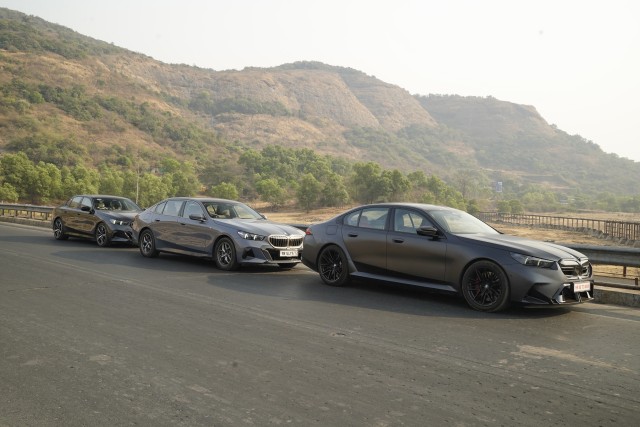
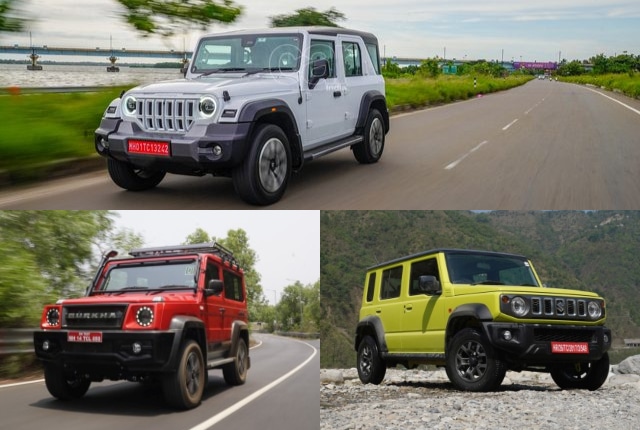
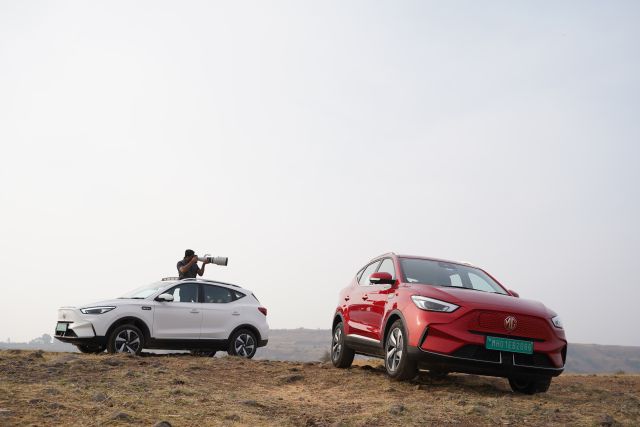
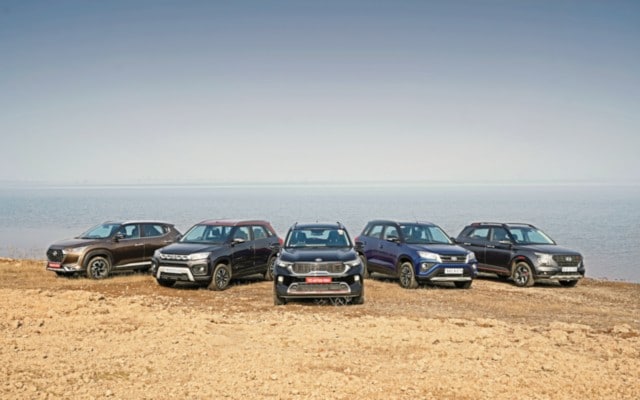
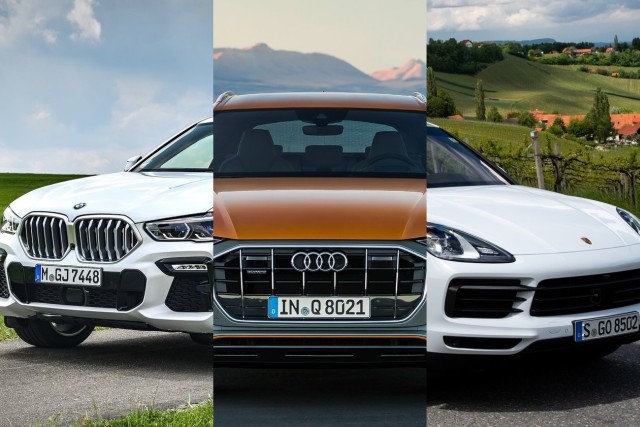
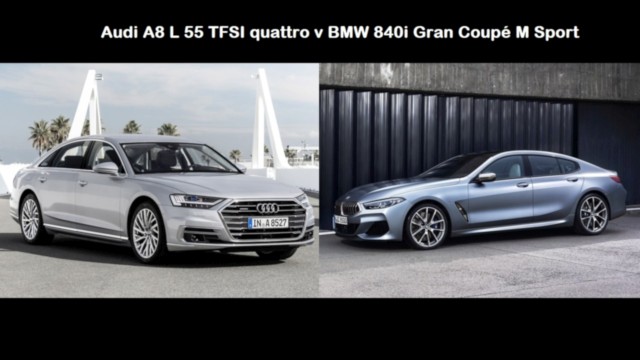
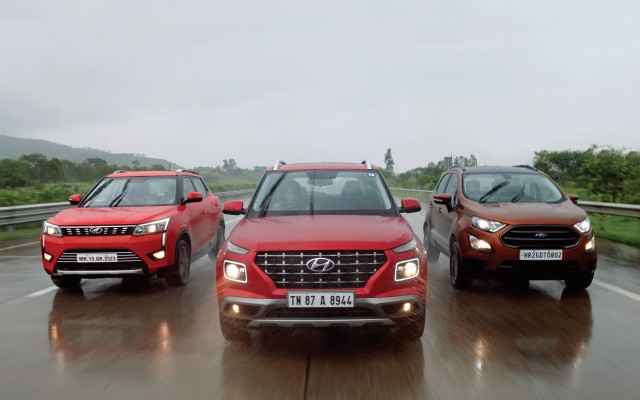
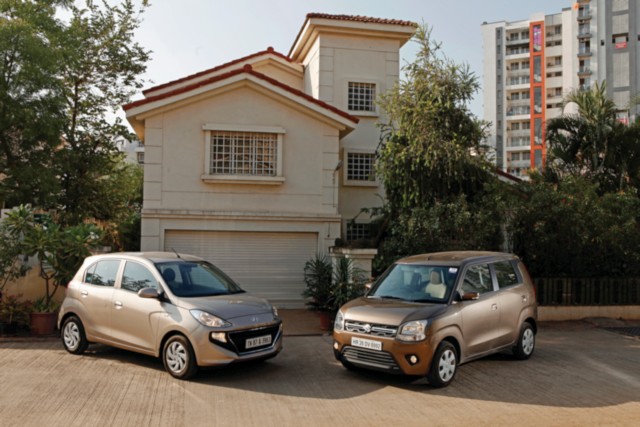
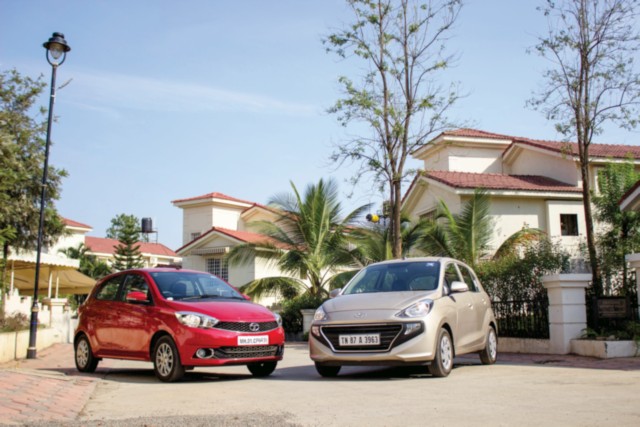
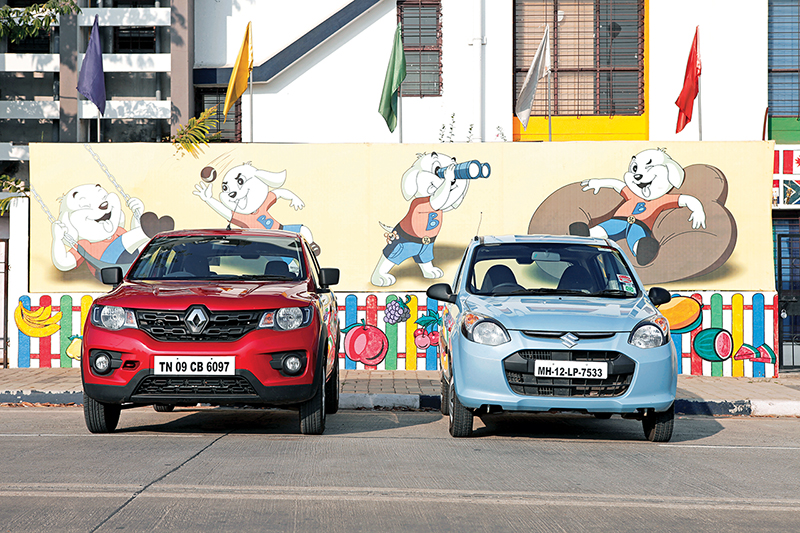
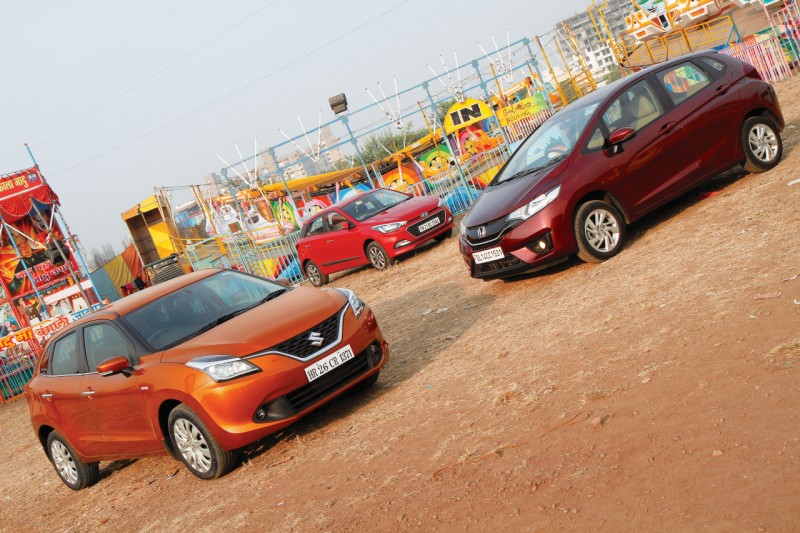
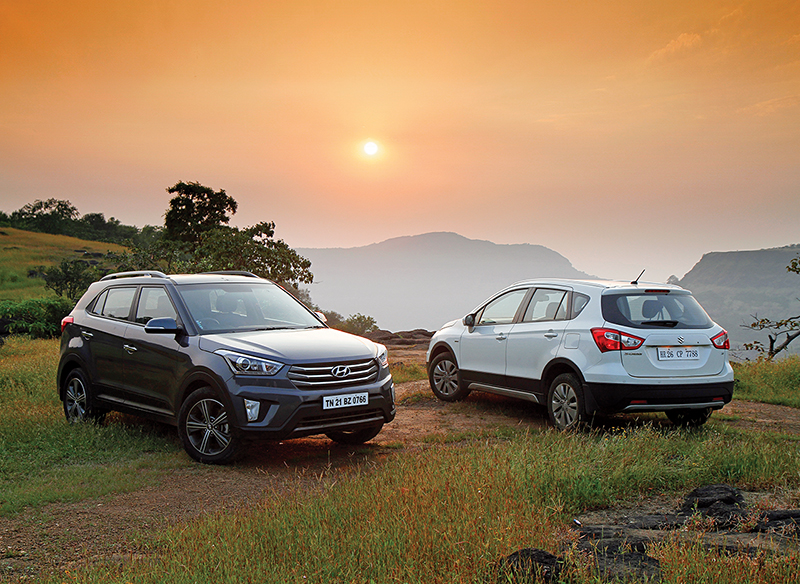
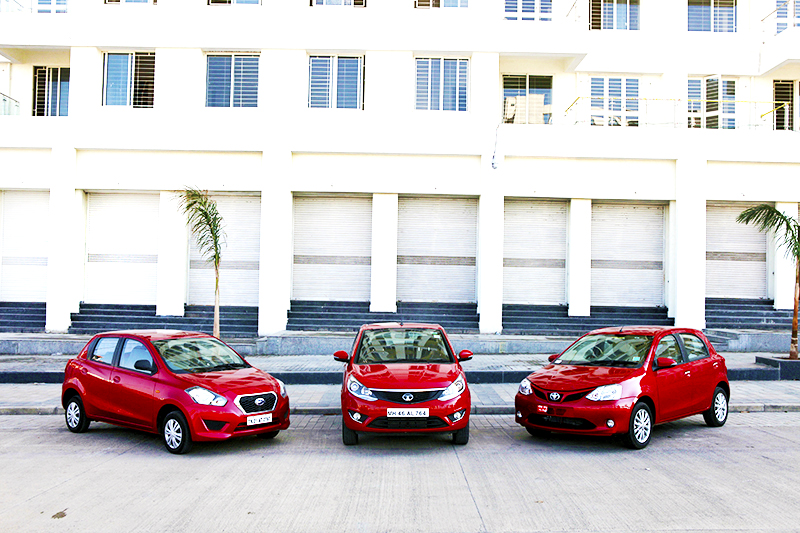
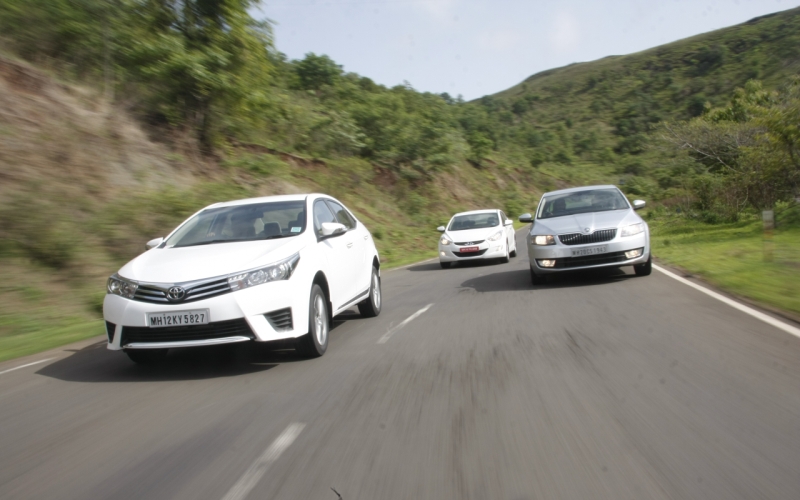
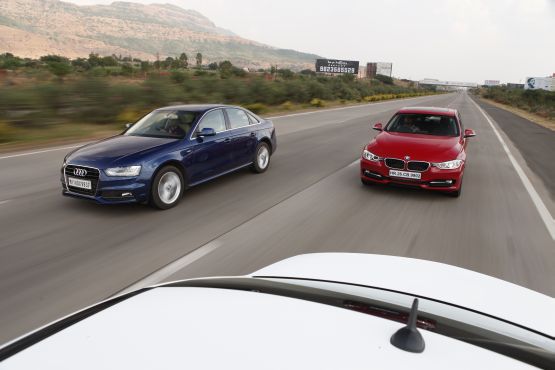




Leave a Reply